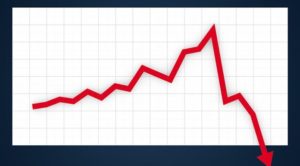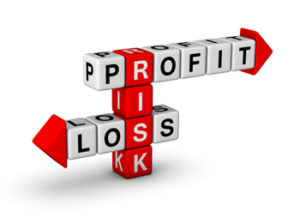Ah, February, when pitchers and catchers report and baseball’s spring training gets underway. That of course means that fantasy baseball season is right around the corner! (Of course, it’s dividend season too, so that’s always fun)
Even as a life-long baseball fan, I didn’t start playing fantasy baseball until well into my adult years in 2005. I love baseball, but quickly learned that love alone would not help me win my league year after year. It’s a major time commitment to research players both before the season starts and once it’s underway.
After starting to dedicate more time on more important matters (like saving and investing for the future!), fantasy baseball has become a casualty, a former hobby I’ve chosen to give up. I’ve realized though, that I’m not really giving up anything… I’m doing a lot of the same things I’ve been doing all these years, except now, instead of researching baseball players and their stats, I research publicly traded companies and their fundamentals.
I’ve realized that investing has quite a bit in common with fantasy baseball.
1. There are “experts” everywhere
No matter your amount of knowledge or experience level, there are plenty of online resources available for you to turn to for advice.
Draft this player, buy this stock, avoid this player, sell this stock.
There’s free advice, costly advice, entire web sites dedicated to nothing but advice. There is no shortage of people telling you what you should or shouldn’t do. In fact, if you read enough, you’re bound to find opposing advise for every single player or stock available.
How do you cut through the noise? I find it useful to find a few folks who have similar philosophies as I do and who have a proven track record of success. No one, whether they’re drafting fantasy baseball players or picking stocks is right 100% of the time, but find people you trust and who can provide realistic, logical explanations for why they like Player A or Stock A over Player B or Stock B.
Most importantly, you have to do your own due diligence. At the end of the day you have to feel good about the selections you make and understand why you made them. No expert can simply take a hold of your hand and lead you to the promised land.
2. Resources are limited
When you draft a fantasy baseball team, you can’t just pick every single awesome player and have the all-time greatest fantasy baseball team. You’re required to fill all positions on the field, and usually players can only be owned by one team. If you could just pick any 15 players you wanted, no one would beat you.
Likewise, most people don’t have unlimited funds to purchase loads of shares of every quality, under-valued stock. If we were able to purchase every stock we wanted whenever we wanted, we’d all be sitting on a beach with a frozen drink living off our mountain of dividends.
Both fantasy baseball and investing are an exercise in efficient resource allocation.
3. Past performance doesn’t guarantee future results
This is one sage bit of advice that we often fail to remember, either when talking about baseball players or companies.
In 1995, the Orioles’ Brady Anderson put together a pretty decent year, belting 16 home runs and stealing 26 bases. This was his second best season in terms of four-baggers, having hit 21 in 1992 (albeit with nearly 100 more plate appearances that year). Brady was the talk of the town in 1996 after hitting his 50th HR in the final game of the season. Surely no one saw that coming. Guess how many times Brady hit 50 home runs after that? If you guessed zero, pat yourself on the back. Brady regressed to his normal self after that, hitting anywhere between 18 and 24 home runs each season for the next four seasons before falling off a cliff and retiring.

GE, a company founded 1892, seemed to do nothing but go up, split, pay dividends, etc.; rewarding their shareholders generation after generation. A single share purchased in 1913 would have turned into 4.608 shares today. GE has been one of the mostly widely held companies for decades, the exact definition of a SWAN (Sleep Well At Night) stock. Cracks in the armor began appearing in the mid-2000’s, and the stock eventually plummeted more than 50% from its all-time high set in the early 2000’s.
There are countless stories of baseball players and stocks alike that had a nice run, only to falter and never reach a peak level of performance previously established. Each baseball season is a new one, and each quarterly report is unique and independent of the last.
The past can help guide us, but it’s certainly no guarantee of future results.
4. Patience is a virtue
There are no shortage of quotes about patience; from Aristotle to Ben Franklin. Why is that? Probably because it’s one thing we as humans struggle with, yet it’s one thing that often brings great reward. This is even more true today as we live in an instant gratification world, surrounded by 24 hour news and information, same day delivery, our favorite television shows and movies on-demand, the list goes on and on. We’re not trained to be patient in today’s world.
The baseball season is a long slog, spanning some six months between opening day at the end of March and the final day in late September or early October. All players, even the best, will endure a slump at some point, and some may even start the season off slow, leading you to question why you drafted the player in the first place.
It’s quite possible this player has lost his way and he should be dropped or traded immediately, but more than likely he’s just going through a period of poor production that every player experiences every year. Are the fundamentals still there? Is he being subjected to a bit of bad luck? There are a number of stats one can look at to help answer these questions. Has his BABIP dipped to abnormal levels? What’s his ground ball/fly ball ratio look like in relation to his career norms? Is he swinging at too many pitches outside the strike zone?
When you weather the down times, you’ll often be rewarded with good times in the future.

Similarly, the stock market can be a fickle thing. Every company experiences ups and downs in share price, even with no change in company forecasts or fundamentals. Earlier this month, money was pouring out of the market, sending share prices across the board plummeting. Those who lost patience and jumped ship lost out on the immediate bounce that followed.
When a company’s shares fall in price, it’s quite possible that some fundamentals have changed and the company is not as solid as it was when you first purchased your shares. It’s also more likely that this is minor blip in what is hopefully a long, upward trajectory of returns. If you’re still confident in the company and its future, you can have confidence that the price will ultimately rebound.
5. Diversification is key
It takes both a well-balanced fantasy team as well as a well-balanced portfolio to provide maximum results, smooth the ups and downs and minimize risk.
When drafting a fantasy baseball team, one must consider stats in a multitude of categories. There are the basics like home runs, stolen bases and batting average for hitters and strikeouts, wins and ERA for pitchers. Some of the most coveted players are those who contribute to multiple categories. Can you steal twenty bases and hit twenty home runs? I’ll want you on my team. You’ll need to draft guys who together should provide you with solid numbers across all scoring categories.
If you’re counting on three of four players to contribute substantially to your stolen base category, you can still compete if one of those players under-performs. However, if you only have one player who you’re counting on for the majority of your stolen bases and he under-performs, you’ll likely find yourself out of contention for a title.

Likewise, your portfolio needs to include a balance of sectors, minimizing risk if one of those sectors under-performs. This year’s dog might be next year’s golden child and it’s virtually impossible to try to figure out what will be flying high this year vs last. Having a nice balance will protect you when one area of your portfolio lags behind the greater market. Oh sure, you might kick yourself a little when you see tech stocks soaring like crazy like in 2017 and your portfolio only contains 10% tech stocks, but you can also sleep well at night knowing when they inevitably slow down, you’re protected by diversity.
6. Emotions only get in the way
We as humans like to get attached to things and it takes great discipline to detach once a bond has been formed.
When drafting a fantasy baseball team, everyone has certain guys they get attached to. Maybe it’s players on their favorite team, or maybe it’s this year’s can’t miss prospect, or maybe even that sleeper pick you’re convinced will carry you to a championship.
Whatever the reason for our attachment, it can be difficult evaluating them through a clear lens. Maybe we reach for them in the draft, knowing we want them at any cost. Maybe we trade for them and give up more than we should.
Once that bond is established, it can also be hard to say goodbye. Sometimes this year’s can’t miss prospect doesn’t pan out, or maybe neither does that sure sleeper pick. Sometimes we hold on too long to something that isn’t helping us in any fashion.

The same things can happen with stocks.
Maybe as a fan of Apple products we decide we want to own shares right now without a thought to current price and valuation. We reach for things we want which causes us to pay a higher price than maybe we should.
Maybe we’re convinced this upstart biotech company is going to show a breakthrough with something in their pipeline. We buy, and hold, and hold, and have a hard time letting go even when it’s obvious that the breakthrough is not forthcoming. We can’t cut our losses and reallocate our funds to something more worthwhile.
7. Buy low, sell high
Age old advice that applies to both fantasy baseball and investing (of course, with dividend investing, it’s more like “buy low, hold forever”). If you’re able to take advantage of others’ impatience or lack of knowledge, you can work temporary setbacks into your favor.
Can you accurately identify last year’s bust who is poised for a breakout or return to form this year? During the season, can you work a trade for a slumping star without giving up too much in return?
Similarly in the stock market, will you be ready to pull the trigger on a purchase when the market has beat up a company’s share price? Are you astute enough to put your money in when others are pulling their money out?
Having enough faith in your analysis to go against the grain is often where you can find the greatest reward.
8. Don’t be afraid of risk, but don’t go overboard
It’s important to build a solid foundation, both with your fantasy baseball team and your investment portfolio. Most of your resources should go towards players or stocks that have a high certainty of continued solid performance and a certain level of predictability.

There’s a place on every team for a young player who might be poised for a breakout, but you don’t want to commit your top draft picks to such players. Early in drafts you want players that have a much greater chance at putting up good numbers. These are the players that have produced year in and year out that you can expect to continue on that path. As you get into the later rounds of a draft is where you want to allocate picks to these flyer type of players. If they don’t pan out, they won’t kill your season, but if they do break out, you might be looking at a championship.
Likewise you should make room in your investment portfolio for those riskier plays. You don’t want to put all your money on some hot tech IPO (i’m looking at you SNAP), but if you have a couple of bucks you wouldn’t miss if it didn’t pan out, you might just one day be sitting on the next Amazon or Apple (or pets.com?).
Good luck this year in both your fantasy sports world and your real life investing world!
